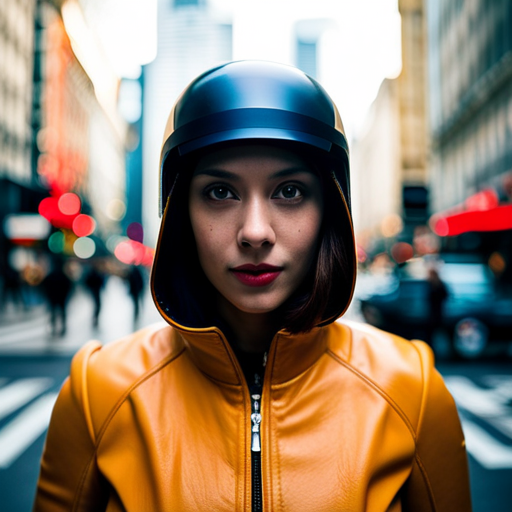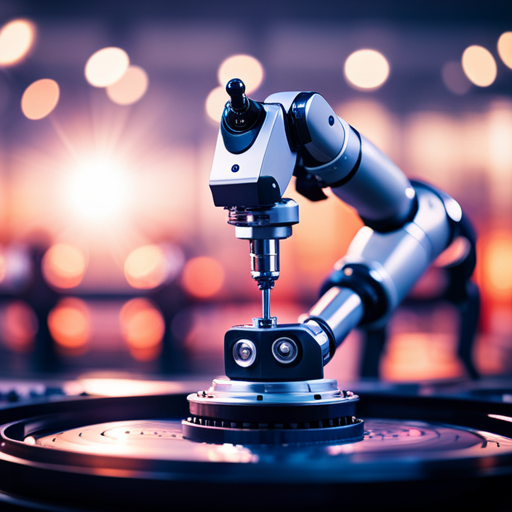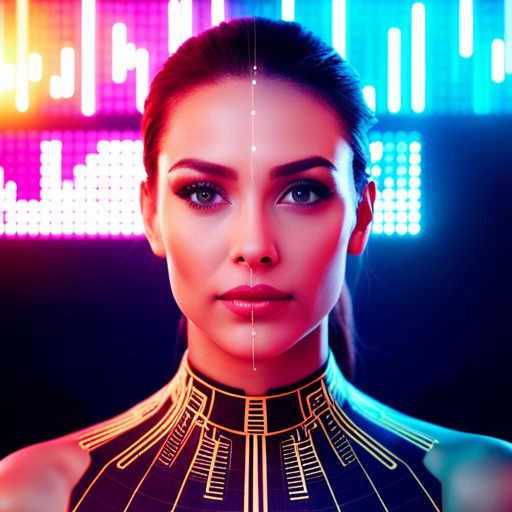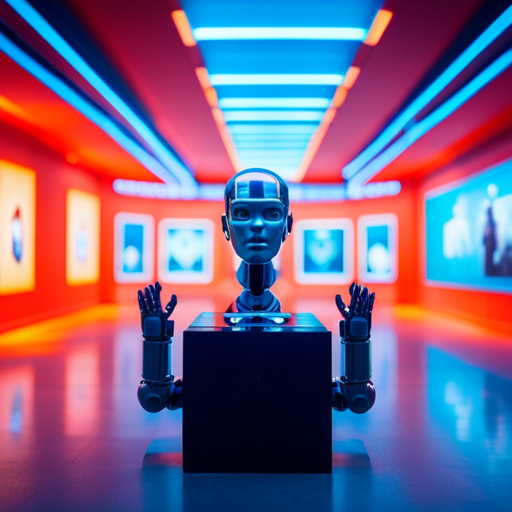Are you interested in mastering image generation with AI? Look no further!
In this article, we will explore the key techniques and best practices for creating stunning images using artificial intelligence. You’ll discover advanced algorithms, learn how to enhance image quality, and understand the best practices for training AI models.
Plus, we’ll show you how to optimize performance and efficiency in your AI-based image generation.
Get ready to take your image generation skills to the next level!
Key Takeaways
– Generative Adversarial Networks (GANs) are a key technique for AI-powered image generation.
– Advanced algorithms like Variational Autoencoders (VAEs) and Neural Style Transfer unlock endless possibilities in image generation.
– Enhancing image quality in AI-driven image generation can be achieved through denoising and super-resolution algorithms.
– Best practices for training AI models for image generation include data augmentation techniques to improve robustness and generalization.
5 Key Techniques for AI-powered Image Generation
@ Midjourney AI Image Prompt: /imagine prompt:Create an image featuring a neural network architecture diagram with clearly labeled layers, showcasing the flow of data from input to output. Highlight key techniques for AI-powered image generation, such as GANs, style transfer, autoencoders, and more. –v 5.2 –ar 16:9
One of the key techniques for AI-powered image generation is using generative adversarial networks (GANs). GANs consist of two neural networks – the generator and the discriminator – that work together to create realistic images.
The generator network is responsible for generating images, while the discriminator network evaluates and distinguishes between real and generated images.
Using GANs for image generation has several advantages. Firstly, GANs can capture the complex patterns and structures present in training data, allowing them to generate high-quality images that closely resemble real ones. Additionally, GANs can learn from unlabeled data, making them versatile in scenarios where labeled training data is limited. This makes GANs particularly useful for tasks such as image synthesis, style transfer, and image inpainting.
To train a GAN for image generation, you need to optimize the generator and discriminator networks simultaneously. This involves feeding the generator random noise as input and comparing the generated images with real images using the discriminator. Through an iterative process, the networks improve their performance, resulting in better image generation over time.
Overall, using GANs as a technique for AI-powered image generation opens up possibilities for creating realistic and diverse images for various applications, including art, design, and entertainment.
Exploring Advanced Algorithms for Image Generation With AI
@ Midjourney AI Image Prompt: /imagine prompt:Create an image showing a neural network architecture diagram with multiple layers, including convolutional and generative adversarial network (GAN) layers, showcasing the advanced algorithms used in AI-based image generation techniques. –v 5.2 –ar 16:9
Explore advanced algorithms for generating images with AI, and discover how you can enhance your skills in this area.
With the rapid advancements in AI, the field of image generation has seen significant progress in recent years. By leveraging powerful algorithms, you can now create stunning and realistic images that were once thought impossible.
To help you navigate this exciting field, here are three key algorithms that are commonly used in image generation:
– Generative Adversarial Networks (GANs): GANs are a popular choice for image generation tasks. They consist of two neural networks, a generator and a discriminator, that compete against each other to improve the quality of generated images. GANs have been used to create impressive results, such as generating realistic faces and landscapes.
– Variational Autoencoders (VAEs): VAEs are another powerful algorithm for image generation. They work by learning a compressed representation of an input image, called the latent space. By manipulating this latent space, you can generate new images with desired properties. VAEs are often used for tasks like image inpainting and style transfer.
– Neural Style Transfer: This algorithm allows you to transfer the style of one image onto another. By combining the content of one image with the style of another, you can create unique and visually appealing images. Neural style transfer has applications in art, design, and even photography.
By understanding and mastering these advanced algorithms, you can unlock endless possibilities in image generation.
Enhancing Image Quality in AI-driven Image Generation
@ Midjourney AI Image Prompt: /imagine prompt:Create an image of an AI model analyzing a low-resolution image and producing a high-quality version with enhanced details and vibrant colors. Show the transformation process, highlighting the intricate algorithms and deep learning techniques behind image quality enhancement. –v 5.2 –ar 16:9
Improve the quality of your AI-generated images by incorporating advanced techniques and leveraging the latest advancements in image processing algorithms.
One way to enhance image quality is by using denoising algorithms. These algorithms help reduce noise and artifacts that can often occur in AI-generated images. By applying denoising techniques, such as bilateral filtering or non-local means, you can significantly improve the visual clarity and sharpness of your images.
Another technique to consider is super-resolution. Super-resolution algorithms allow you to generate high-resolution images from low-resolution inputs. This can be particularly useful when working with low-quality or pixelated source images. By upscaling the resolution using advanced super-resolution techniques like deep learning-based methods, you can generate more detailed and realistic images.
Additionally, you can enhance the visual appeal of your AI-generated images by incorporating style transfer algorithms. These algorithms allow you to transfer the style of one image onto another, giving your AI-generated images a unique and artistic touch.
Best Practices for Training AI Models for Image Generation
@ Midjourney AI Image Prompt: /imagine prompt:Create an image showcasing a grid of diverse, high-resolution training images. Each image should display balanced lighting, sharp details, and minimal noise, demonstrating best practices for training AI models in Image Generation. –v 5.2 –ar 16:9
To ensure optimal results, you should consider incorporating data augmentation techniques into your training process when training AI models for image generation.
Data augmentation is a powerful technique that involves applying various transformations to your training dataset to create new and diverse samples. By doing so, you can increase the size and diversity of your dataset, which in turn helps your AI model learn more effectively and generate higher quality images.
There are several data augmentation techniques you can utilize. One common technique is flipping, where you horizontally or vertically flip the images in your dataset. This helps the model learn different variations of the same object or scene.
Another technique is rotation, where you rotate the images at different angles. This helps the model understand the object’s appearance from various viewpoints. Additionally, you can experiment with other techniques such as scaling, cropping, and adding noise to your images. These techniques introduce variations in scale, perspective, and texture, which can further enhance the model’s ability to generate diverse and realistic images.
By incorporating data augmentation techniques into your training process, you can improve the robustness and generalization of your AI models. Remember to experiment with different augmentation techniques and find the ones that work best for your specific use case.
Happy training!
Optimizing Performance and Efficiency in AI-based Image Generation
@ Midjourney AI Image Prompt: /imagine prompt:Create an image showing a streamlined assembly line, with AI-powered robots efficiently generating high-quality images. The robots should be precisely executing tasks, showcasing optimized performance and efficiency in AI-based image generation. –v 5.2 –ar 16:9
One way to enhance performance and efficiency in AI-based image generation is by optimizing the model’s architecture. By carefully designing and fine-tuning the structure of your AI model, you can significantly improve its ability to generate high-quality images while minimizing resource consumption.
When optimizing the architecture, consider reducing the model’s complexity by removing unnecessary layers or reducing the number of parameters. This can help make the model more compact and efficient, allowing for faster image generation without sacrificing quality. Additionally, you can explore different types of layers and activation functions to find the ones that best suit your specific image generation task.
Another strategy to optimize performance is by utilizing parallel processing techniques, such as distributing the workload across multiple GPUs or even multiple machines. This can greatly speed up the image generation process, particularly for large-scale projects.
Furthermore, consider using techniques like transfer learning, where you leverage pre-trained models to bootstrap your image generation model. This approach can save a significant amount of training time and resources, as the pre-trained model already has learned features that can be useful for your image generation task.
Overall, optimizing the architecture of your AI model is a crucial step in achieving better performance and efficiency in image generation. By carefully considering the design choices and exploring various optimization techniques, you can unlock the full potential of AI-based image generation.
Frequently Asked Questions
Can Ai-Powered Image Generation Algorithms Be Used for Creating Realistic Human Faces?
Yes, AI-powered image generation algorithms can create realistic human faces. They use advanced techniques to analyze and replicate facial features, resulting in lifelike images. These algorithms have revolutionized the field of computer-generated imagery.
How Can Ai-Generated Images Be Protected From Copyright Infringement?
To protect AI-generated images from copyright infringement, you should consider using watermarks, digital signatures, and metadata. Additionally, you can register your creations with copyright offices and enforce your rights through legal measures if necessary.
What Are Some Ethical Considerations to Keep in Mind When Using AI for Image Generation?
When using AI for image generation, you should be aware of some ethical considerations. These include ensuring the images are not misleading or harmful, respecting privacy rights, and avoiding biases and discrimination in the generated content.
Are There Any Limitations or Challenges in Using AI for Generating High-Resolution Images?
Yes, there are limitations and challenges when using AI for generating high-resolution images. It may struggle with fine details and produce unrealistic results. Additionally, it requires significant computational power and large datasets.
Can Ai-Generated Images Be Used for Commercial Purposes Without the Need for Attribution or Licensing?
Yes, you can use AI-generated images for commercial purposes without the need for attribution or licensing. AI enables you to create high-resolution images effortlessly, opening up new opportunities for your business.
Conclusion
In conclusion, mastering image generation with AI requires a deep understanding of key techniques and advanced algorithms. By exploring different approaches and enhancing image quality, you can create realistic and visually appealing images.
Following best practices for training AI models, such as using diverse datasets and optimizing performance, is crucial for achieving successful results.
With continued advancements in AI technology, image generation is becoming more powerful and efficient, opening up new possibilities in various industries.
So, keep learning and experimenting to unlock the full potential of AI-powered image generation.



